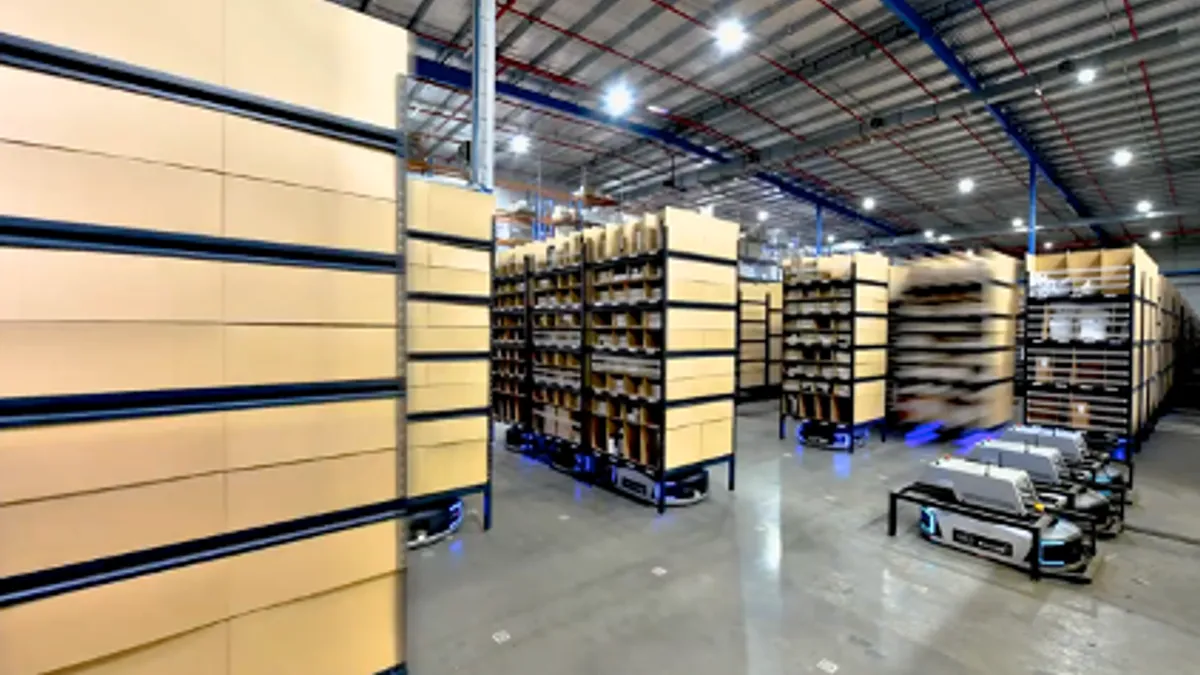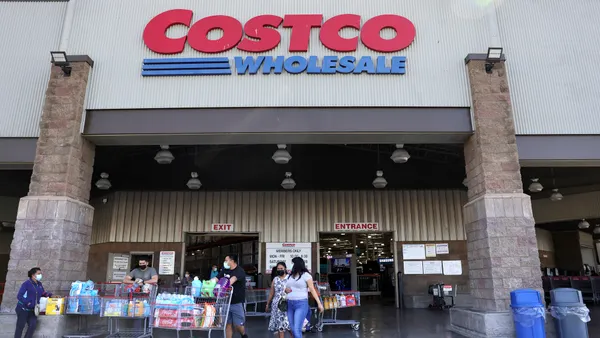In recent years, the integration of AMRs (Autonomous Mobile Robots) in warehouses has experienced a remarkable surge, revolutionizing the way logistics operations are managed. However, despite the rapid adoption and the proven benefits of AMRs in various industries, there are still myths and misconceptions surrounding this topic.
Today, we will take a closer look at 5 common myths and provide a clearer understanding of the capabilities that AMRs offer in the logistics industry.
Myth 1: AMRs require a large financial investment
Across various industries, AMRs have been proven to greatly enhance productivity and efficiency by enabling faster output, greater picking accuracy and increased operational flexibility in all production processes. To achieve such remarkable results, it is commonly misunderstood that a huge upfront cost is needed to implement AMR systems. That is not necessarily true.
The overall investment of AMRs can be divided into several phases for warehouse operators to review the product performance data and decide if they want to scale up the deployment.
It can be true that the equipment, and software needed for fully automated Goods-to-Person (GTP) systems like AMRs are considerably more expensive than automated Person-To-Goods (PTG) systems. However, despite the initial capital expenditure, GTP systems can generate favorable ROI when considering potential labor efficiencies, real estate savings and life cycle costs.
In the case of AMRs, the ROI payback period is attractively low, estimated at around 2 years as a rule of thumb.
Myth 2: AMRs will “replace” my labor force
The concept of automation and integration of warehouse robots can raise concerns about the potential for job replacement. However, it isn’t so much of a “job replacement” as it is a “job reallocation” – instead of doing the brunt of physical tasks in a warehouse, your warehouse employees can focus on more meaningful and fulfilling responsibilities, such as inventory management and robot fleet management. With a happier and safer working environment, workers feel more valued and supported and they will be more motivated to stay in their roles, ultimately leading to higher employee retention rates.
In addition, AMRs bring a valuable partial solution to the ongoing issues of labor shortages in the supply chain industry and the need for flexible part-time workers during unpredictable peak periods. By implementing AMRs, businesses can bridge the gap created by labor shortages and ensure uninterrupted operations during peak season.
Myth 3: AMRs require a lengthy deployment period
Time to bust this misconception for good – did you know that, unlike other automation systems, AMRs only require minor changes to the warehouse infrastructure: primarily the floors, connectivity, electricity, and the addition of racks and robots?
The fastest deployment of AMRs is 2 weeks, with 3 months being the average deployment period. Watch this video below to see how a Goods-to-Person system deployment happens in a warehouse in only 2 weeks
Myth 4: I will be an early adopter of AMR technology
Robotic automation is not something new or foreign to the logistics world. Many businesses have embraced AMR technologies and are currently enjoying the plentiful rewards and advantages it offers.
Retail case:
With advanced robotic solutions, Geek+ helped Ariat International optimize throughput and increase storage capacity in its’ 1 million sq. ft warehouse operations.
Ariat’s warehouse associates have experienced a 100% increase in productivity, while their walking distance has been reduced by 80%, from 40,000 steps a day to 7,000 steps a day.
Matt Hardenberg, VP of Distribution, Ariat International, said, “Geek+’s AMRs allow us to move our employees away from repetitive tasks and towards more rewarding activities, resulting in a better working environment and bringing greater value to the services we provide our customers.”
Click here to learn more about this case study.

Myth 5: Totes are better than shelves for piece picking
The reality is that each storage method has its benefits and drawbacks.
Tote pick
Although individual totes may store smaller quantities of items than a shelf, tote storage for piece picking is highly favorable for items with a variety of SKUs since they can be stored in the same tote; e.g., different size shirts.
Tote-picking operations typically provide greater storage capacity since the racks used are much taller, around 8 meters higher compared to shelf picking operations. ASRS solutions that facilitate automatic retrieval would be recommended to help retrieve small items.
Shelf pick
Considering that shelf height stands at a maximum of 2.8m, its storage capacity is likely less than tote picking operations for piece picking. However, it is very suitable for businesses with large products because the shelves can be customized to store different SKU sizes, without the capacity limitations of a tote.
It may also be very suitable for warehouses in urban areas, such as those located within industrial buildings or stores – as the height of the building may not exceed 4-5 meters.
Hybrid pick possibility
Geek+’s PopPick system offers the flexibility of rack customization, accommodating various types of racks, such as mixed racks with different shapes and sizes of goods, a combination of cartons and totes, traditional racks, and even large heavy pallet racks. Furthermore, PopPick System enables high-density storage with 12 columns of totes stored in rows that have only 20mm gaps between totes. It allows the warehouse to achieve four times its storage capacity. This high compatibility makes it easily adaptable to different industries, including retail, apparel, 3Pl, ecommerce and more.
Many concerns may come to mind when considering the deployment of AMRs; in this article, we have shed light on some of them and hope we have debunked some myths and provided answers to some questions.










